All about the royal strelitzia
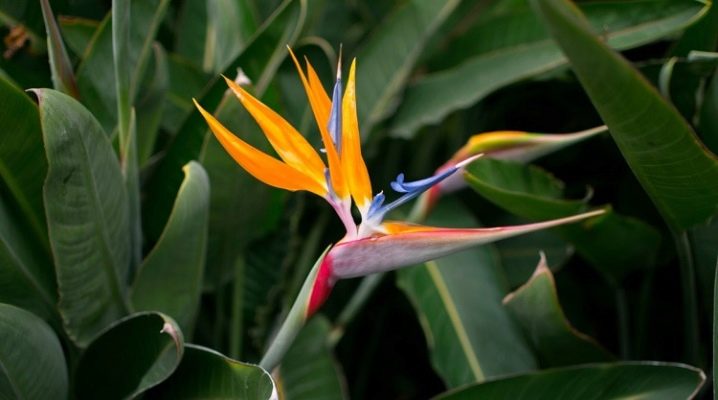
Strelitzia royal is one of the most beautiful flowers, and it is quite possible to grow it at home. This culture will become a real decoration of a room or greenhouse, as it looks incredibly decorative, resembling a colorful bird from tropical countries.
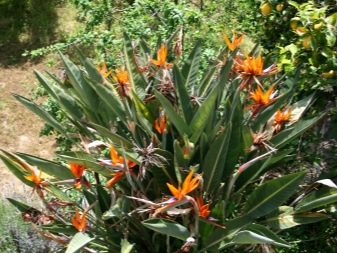
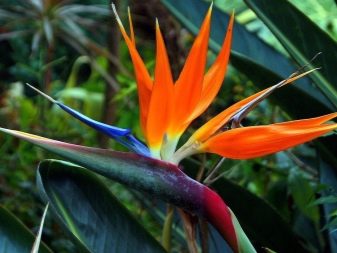
Description of the flower
Strelitzia belongs to the Strelitziaceae family, and at the moment only 5 species of this plant are known. They all grow in the hot South African climate. In Europe, they learned about the "bird of paradise" in the 18th century. Then the British came to Africa, and they saw this wondrous flower. Strelitzia was named after the wife of the king who ruled at that time. Since then, the plant has spread around the world and has taken root in a climate much different from its natural habitat.
Royal Strelitzia is a perennial culture. In nature, its height can be 2 or more meters (up to 9), but in apartments it is usually no higher than one and a half. The foliage is evergreen, with a slight bluish tint. It is rather leathery, long, located on a strong oblong petiole. On the reverse side, large pink blotches are visible. Foliage grows directly from the bottom of the root, in the form of rosettes. The root is very strong, rod-shaped, well anchored in the soil. The culture has no stem. The inflorescence of the plant is very similar to a bird frozen in flight. It is colored quite brightly: orange and luscious blue are effectively intertwined with each other. Sometimes there are also yellow-blue flowers. Peduncles are high.
It should be noted that only adult plants bloom. This period is long, and the peduncles can be formed in turn. One bush can release up to seven of them.
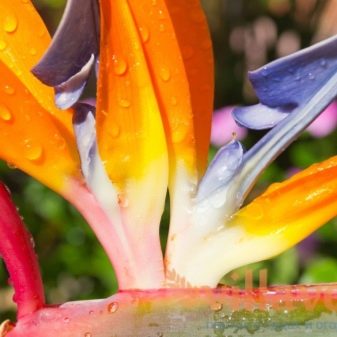
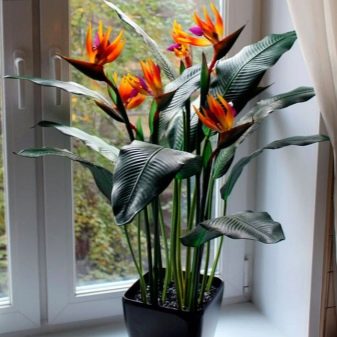
Varieties and hybrids
There are quite a few varieties of Strelitzia Regina, since breeders purposefully do not work with the crop. However, the plant is being studied in one of the South African botanical gardens. Thanks to a special program, scientists have managed to obtain several hybrid variations:
- Mandelaz Gold is a broadleaf crop with yellow bracts;
- dwarf F3 with red bracts;
- the usual F3, characterized by the presence of elongated peduncles;
- subspecies with bracts of juicy purple tones.
As for the usual varieties, so far scientists know only about one thing, it is called "Citrine". This is a rather old form with yellow flowers.
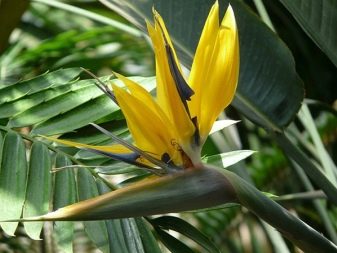
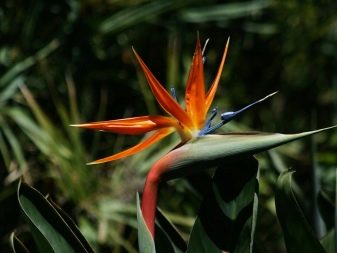
Growing conditions
It is not difficult to cultivate Strelitzia Regina at home. But certain nuances are still worth considering.
Location
You can grow strelitzia in pots or flowerpots. Both options will need a lot of sunlight. For small pots with young plants, you should choose the east or west side, and set large ones so that their leaves rise above the windowsill. It is worth noting that Strelitzia Regina prefers bright light in the morning and evening, but in the afternoon, when the sun is aggressive, it should be diffused.
Plant pots should be ventilated, especially in spring and summer. If there is a garden, great. You can take the culture there, even leaving it for the whole day. In the absence of a plot, you can use a balcony or loggia. It is also worth considering the temperature parameters of the place where the strelitzia grows. In the spring it should be 20-22 degrees, in the summer - up to 35, in the fall they return to spring rates. In winter, a temperature of 12-16 degrees is permissible.

The soil
In the wild, Strelitzia prefers wet areas.This tropical flower can often be found near water bodies, where it hides from the heat in the canopy of gigantic trees. At home, the culture needs a loose and nutritious soil with neutral acidity. In stores, it goes under the name "Soil for decorative flowering crops." You can make the earth yourself, its composition:
- turf - 1 part;
- sheet land - 1 part;
- humus - 2 parts;
- compost -2 parts;
- sand - 0.5 or 1 part.
Do not forget that self-made soil must be disinfected before use.
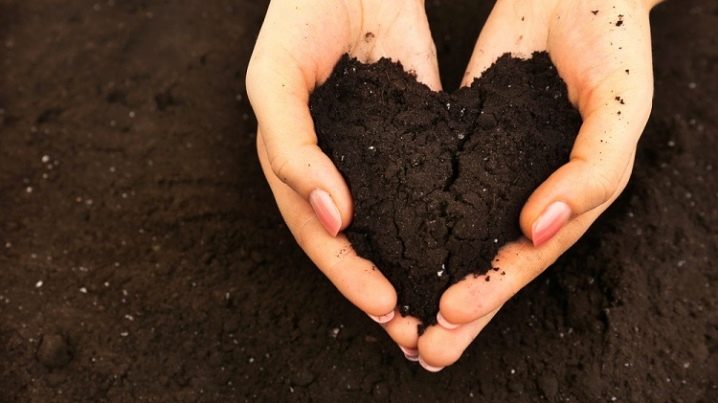
Landing
It is best to plant strelitzia with seeds. But it is important to buy them from a good manufacturer, since the shelf life is no more than 90 days. Purchased seeds need soaking. They are immersed for 24 hours in a container of water, which has a temperature of 40 degrees. It is important to try to maintain these parameters. Then they take small plastic cups, make holes on the bottom. Fall asleep 1/3 of the substrate, pour boiling water over and wait for it to cool. Next, a two-centimeter layer of sand is placed in the cups and seeds are spread on it, almost without deepening. They are taken to a well-lit place where the air temperature will be + 22-25 degrees. Cover with glass or foil. They take care of the standard, watering and airing as needed. When the seedlings become strong, they are transferred to small pots.
Separately, it should be said about plant transplantation. It is customary to do it once every 3 years, not more often, since strelitzia does not tolerate it well. The stages of work will be as follows:
- choose a container with high walls (in terms of volume, it should be larger than the one where the flowers were located);
- thoroughly wash, disinfect, put drainage on the bottom;
- cover the drainage with soil (a thin layer);
- carefully pull the plant out of the previous container, tilting it (you cannot disassemble the earthen lump);
- place the flower in a new pot, cover the sides with soil;
- when the container is full, the plant is watered.
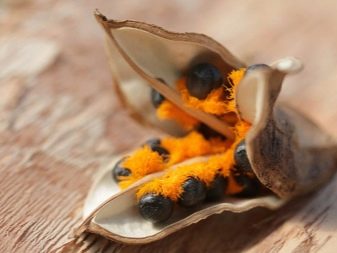

Watering
The active growth and flowering of strelitzia royal take place from the beginning of spring to September. During this period, it must be watered regularly, focusing on the temperature parameters in the apartment. When the topsoil dries up, the flower is irrigated with warm water. It is important to remember that only the top layer can be dry, but not all the soil in the pot. Lack of moisture will greatly delay flowering. You need to water strelitzia with warm water, preferably rainwater, but you can also from the tap, the main thing is to defend it for several days in the sun. Bottom watering is practiced by experienced gardeners. This means that the pot is placed in a container or on a tray filled with water. The duration of such watering is 1 hour, during which time the flower will take exactly as much as it needs. The excess must be drained.
Important: in the autumn-winter period, the plant rests, and it does not need frequent watering. Can be moisturized every 14 days. During this time, the soil in the pot dries out completely, but unlike summer, this does not pose any danger. On the contrary, it guarantees more beautiful flowering in the future. It is also worth paying attention to the total air humidity. A tropical guest prefers high parameters - at least 75%. The easiest way to provide them is to purchase a humidifier that is useful for people as well. If you don't have such a device and you don't want to buy it, you can do it differently:
- regularly spray the leaves with warm water (you cannot spray the flowers);
- put the plant on a wet pallet or wet stones, moss;
- place a plate of water next to the pot.
All of these tips are relevant for spring and summer. If it is winter outside, then the flowerpots should be placed away from the battery and wipe the foliage with a damp cloth every couple of days.
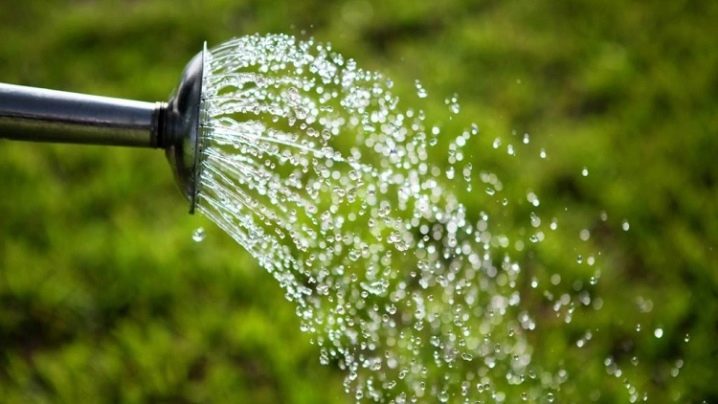
Top dressing
When the plant is in the growing season, it must be fed. This is usually done every 14 days. There are two options for how to fertilize a crop. The first is the alternation of minerals and organics.As originally named, they take phosphorus-potassium compounds, as the second ones - ash, herbal infusions, eggshells. The second option is to buy mixes at a flower shop. This is much easier, since the experts have already added everything that a flower may need to this top dressing.
Pruning
There is no need to form strelitzia, because it lacks central shoots. Accordingly, shaping trimming is not performed. But the sanitary one - yes. If any leaves at the roots are withered, lethargic, sick or dying, they can be removed. This will generally make the plant healthier and more lush.
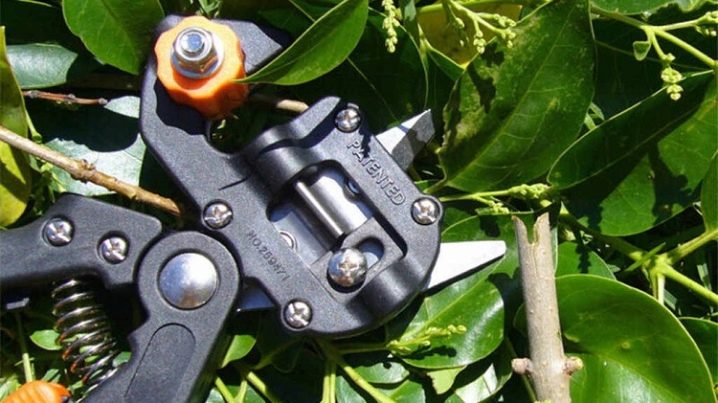
Reproduction
Strelitzia royal is propagated by three methods: seed, dividing the bush and lateral processes. We discussed the first technique above. However, there is one nuance here, it should be studied by those who do not want to buy seeds, but collect them on their own. This is only possible with artificial pollination. It is carried out when the bud opens. With a clean bone, one flower is carried out and the pollen is transferred to another. Only then will the seed pods ripen. In the wild, the role of the pollinator is played by a special bird - the sunbird.
Now let's see how to put into practice the following two methods.
- Division of the bush. This process should be carried out only after the plant has bloomed. The first step is to prepare containers with a nutrient substrate. The diameter of the container is 0.2 meters. The soil is moistened. Then they carefully pull the plant out of the pot, divide it into sockets. Each such outlet should have 2 growth points. After half an hour of drying, they are placed in pots. You can water a new plant for the first time after 14 days.
- Lateral processes. From time to time, strelitzia acquires strong lateral processes. They can be used for reproduction. The shoots are carefully cut from the mother plant, placed in pots with nutrient soil. They are placed in a warm room with a temperature of 22-24 degrees. They are courted in the usual way. Such a flower will bloom, however, not soon (on average, after 3 years).
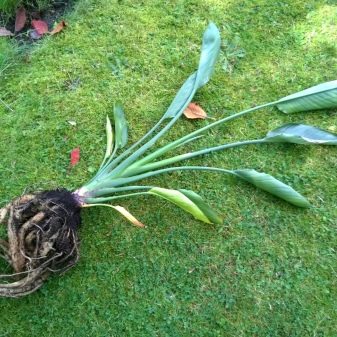
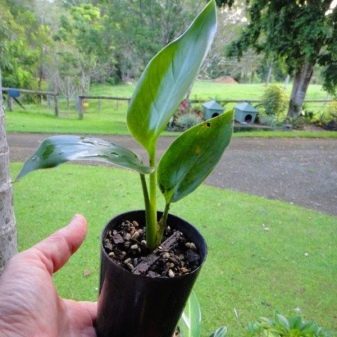
Diseases and pests
Strelitzia is very rarely sick, and this is her great advantage. But with improper care, the following problems may arise.
- Black spots on foliage. Here the reason lies in excessive moisture. Most likely, the plants are sick with root rot. It is necessary to remove the culture from the pot, cut off diseased roots, covering them with crushed activated carbon. Affected strelitzia is transplanted to another land, and diseased leaves are also cut off from it.
- Lethargy plates in winter. This means that the culture is frozen. It is necessary to ensure the correct temperature.
- Dry brown leaf tips. The reason is lack of moisture. It is necessary to normalize the humidity, spray the foliage more often or wipe it down.
- Stopping development. This happens if the strelitzia is planted in poor soil. A solution option is feeding according to the regimen.
- Foliage cracking. This is the first sign of stress. Perhaps you are watering the flower incorrectly, constantly moving it.
- Reset buds. If the strelitzia gets rid of the buds during flowering, this means that you are constantly touching the pot. This cannot be done, at the time of the dissolution of flowers, the container should always be in the same position.
Crops that are often carried to the balcony or garden may be favored by an insect such as aphids. The second common pest is the spider mite. To drive away insects, you can treat the culture with soapy water. If this does not help, it is worth applying insecticides.
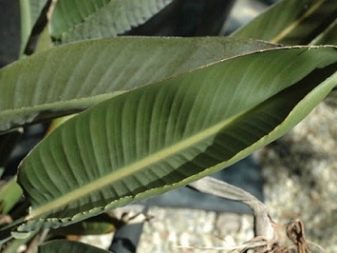
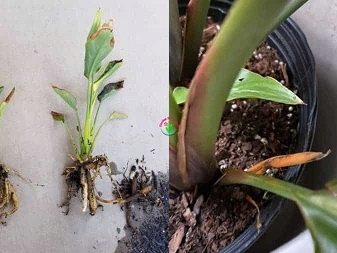
Use in landscape design
Royal Strelitzia is an indoor flower, so it is rarely planted outdoors. Indoors, the plant is often grown solo or in company with other crops. However, Strelitzia usually overshadows them due to their high decorative effect. In summer, in warm weather, large flowerpots can be used to decorate the terrace and local area.A bulky container can be placed on a flower bed, making it an accent.
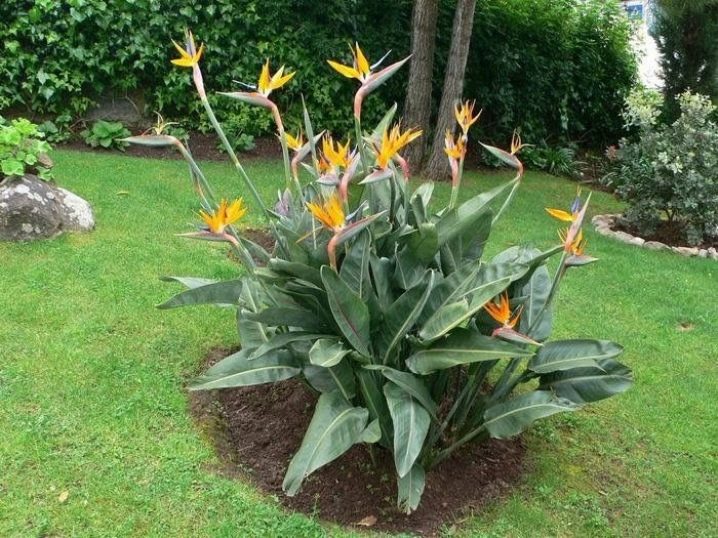
If it is a southern region with a climate close to tropical, strelitzia can also be planted on the site. It looks great in flower beds and rockeries, surrounded by contrasting plants in color. For example, you can plant purple, blue, lilac, blue flowers in a company with her. Several plants create spectacular hedges. It is important to note that it is possible to plant a strelitzia on the street only if the coldest temperature in winter is 0 degrees.
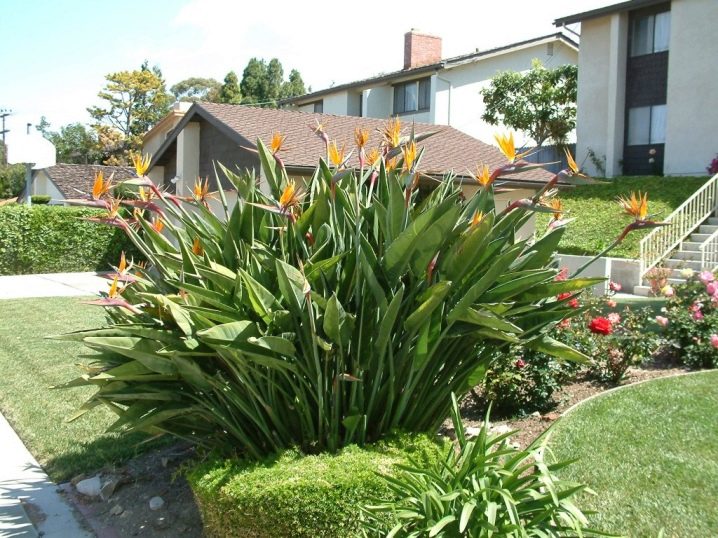













The comment was sent successfully.